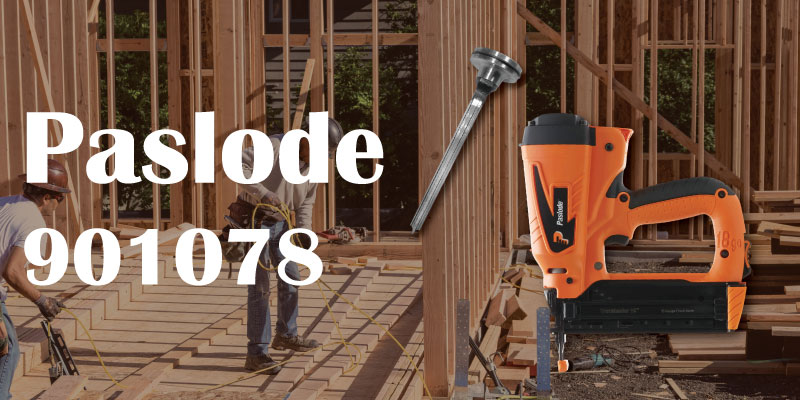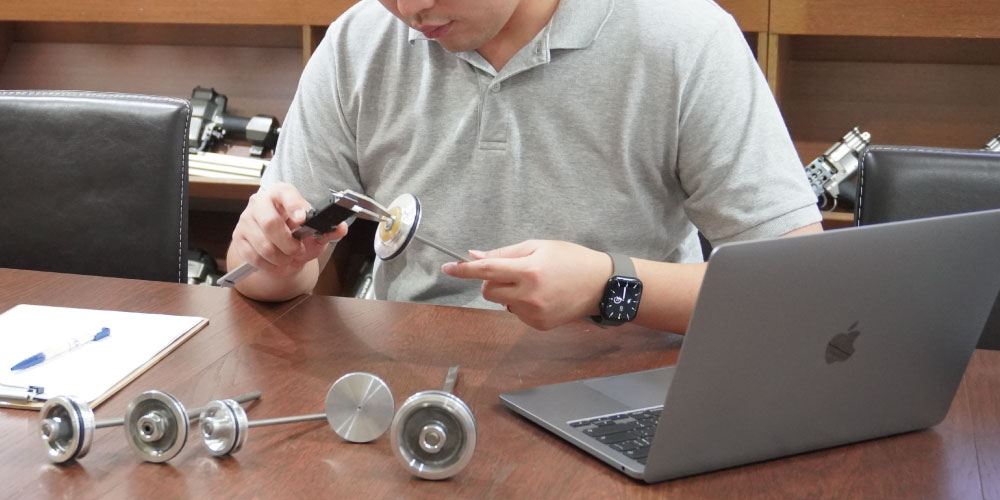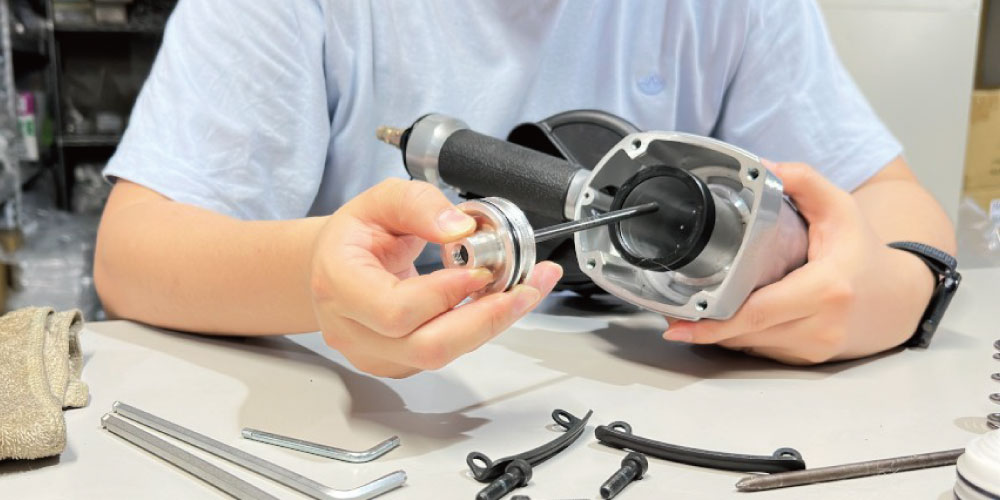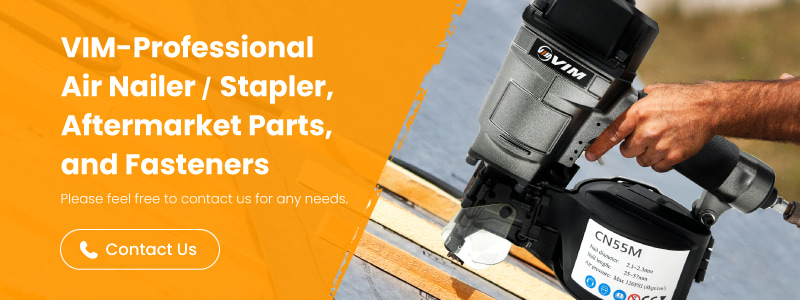- Home
- INSIGHT
- Spare Parts
- What Happens When a Driver Blade Fails? Lessons from the Paslode 901078
What Happens When a Driver Blade Fails? Lessons from the Paslode 901078

The driver assembly is one of the most critical components in any nail gun, directly responsible for converting the tool’s power source into the impact that drives fasteners into place. Whether the nailer runs on compressed air, a rechargeable battery, fuel cells, or powder charges, the driver assembly—made up of the piston, driver blade, and seal rings—ensures consistent and reliable operation.
Understanding how the driver assembly works, when to replace it, and how to maintain it is essential for both professionals and DIY users who rely on their nail guns for accuracy and efficiency. This guide breaks down the core parts, common problems, and practical maintenance advice, with a closer look at the Paslode 901078 driver assembly as a real-world example.
What Makes Driver Assembly?
 A driver assembly is the core mechanism inside a nail gun, responsible for transferring the tool’s power source into the driving motion that sets the fastener into the material. Whether the nailer is battery-powered, pneumatic, or fuel-driven, the driver assembly—consisting of the driver blade, piston, and seals—plays the same essential role.
A driver assembly is the core mechanism inside a nail gun, responsible for transferring the tool’s power source into the driving motion that sets the fastener into the material. Whether the nailer is battery-powered, pneumatic, or fuel-driven, the driver assembly—consisting of the driver blade, piston, and seals—plays the same essential role.
In a battery-powered finish nailer like the Paslode TrimMaster 901000, the Paslode 901078 driver assembly converts stored electrical energy into a precise, high-impact motion. In pneumatic nailers, the same function is powered by compressed air, while fuel cell models rely on controlled combustion. No matter the technology, a well-built driver assembly is key to consistent, reliable fastening performance.
Piston
In a driver assembly, the piston is the moving part that delivers force to the driver blade. In the Paslode TrimMaster 901000, the piston is powered by the tool’s battery system, moving in a controlled and precise motion to drive each nail. A well-machined piston ensures smooth movement, consistent impact, and reduced wear on other components. For pneumatic nailers, the piston is powered by compressed air, while fuel-driven models use combustion to achieve the same result.
Driver Blade
The driver blade is the working end of the driver assembly, fixed to the piston and shaped to match the type of fastener being driven. Its cross-sectional profile determines how force is applied to the nail or staple, ensuring proper penetration and alignment.
- Round or cylindrical blades – used in coil nailers, concrete nailers, and decorative nailers, where the blade must hit the nail head directly and transfer maximum force.
- Chisel-shaped blades – common in framing nailers, helping the fastener cut into wood fibers cleanly while reducing the chance of splitting.
- Slim rectangular blades – seen in pin nailers and finishing nailers, designed for precise, low-profile fasteners that require clean, flush finishes.
- Flat wide blades – essential for staplers such as carton closing staplers, corrugated nailers, fine wire staplers, and crown staplers. The flat surface presses evenly across the staple crown, ensuring both legs penetrate to equal depth.
In the Paslode 901078 driver assembly, the driver blade is paired with metal rings to keep it aligned and deliver consistent striking force. If the blade bends, chips, or wears down, the tool will produce shallow drives, jams, or proud fasteners—clear signs that replacement is needed.
Seal Rings (Rubber Ring / Plastic Ring / Metal Ring)
Seal rings are crucial for keeping the driver assembly stable and efficient, though their material and role vary depending on the nail gun type.
- In pneumatic nailers, rubber O-rings provide airtight sealing so compressed air can deliver full driving force.
- In battery- and fuel-powered nailers, plastic or metal rings act mainly as guides and stabilizers, ensuring the piston and driver blade stay aligned during impact.
- In powder-actuated tools, rings also help reduce friction and protect the cylinder from wear.
For the Paslode 901078 driver assembly, only metal rings are used. These rings hold the piston and driver blade firmly in place. If they wear down, the blade may shift, reducing striking power, and in severe cases the piston could even damage the cylinder. Regular inspection of these rings is essential to maintaining reliable tool performance.
【Read more: What is Driver Blade? Accomplished knowledge in original vs. aftermarket! 】
When to Replace a Driver Assembly
 Common Issues: Worn or Broken Driver Blade, Piston Damage, Air Leaks
Common Issues: Worn or Broken Driver Blade, Piston Damage, Air Leaks
- A worn or broken driver blade is the most common reason to replace a driver assembly. Over time, repeated impact can bend or chip the blade, causing frequent jams and nails not driving flush.
- Piston wear or cracks inside the driver assembly reduce impact force, leading to inconsistent nail depth or partial drives.
- Seal or O-ring deterioration not only affects the internal sealing of the nail gun but can also cause the driver blade to shift out of its proper position. When the blade isn’t aligned correctly, the striking power decreases, and nails may drive shallow or unevenly.
How to Diagnose Problems
Check the driver blade for nail gun to see if it is straight and intact. If nails are not sinking properly, or if you notice irregular driving depth, the driver assembly may be worn out. A well-functioning assembly should deliver consistent, smooth performance—anything less could indicate it’s time for replacement.
【Read more: 5 Common Driver Unit Problems Every Air Nailer User Should Know】
How to Tell the Difference Between a Driver Assembly Problem and Other Nail Gun Issues
Some issues may appear similar but aren’t directly related to the driver assembly. Correctly identifying them saves both time and unnecessary part replacements.
- Trigger valve problems – If the nail gun fails to cycle or doesn’t fire at all, it’s more likely a trigger valve failure.
- Seals deterioration – If the tool fires but nails are weakly driven or inconsistent, the seals may be the cause. Worn seals can also let the driver blade slip out of its correct position, reducing striking power.
In some cases, other factors may create similar symptoms:
- A stuck exhaust valve may also weaken the tool’s impact.
- Worn return springs can cause sluggish cycling or incomplete firing.
- Debris or poor lubrication may restrict the movement of the driver blade, mimicking a mechanical failure.
【Read more: Nail Gun Leaking Air from Trigger? Step-by-Step Fix & Prevention】
Case Study: Paslode 901078 Driver Assembly
 Overview of The Paslode 901078 Model
Overview of The Paslode 901078 Model
The Paslode 901078 driver assembly is a replacement part designed for the Paslode TrimMaster 901000 finish nailer. As part of the nailer’s impact system, the driver blade for nail gun works together with the piston to deliver the force needed to drive nails consistently. This assembly ensures that each fastener is set at the proper depth and maintains the overall performance of the tool. The 901078 model is specifically compatible with Paslode’s cordless TrimMaster line, making it an essential spare part for users of this series.
Installation Tips and Safety Notes
When replacing the driver assembly, always disconnect the tool from its power source—such as a battery, fuel cell, compressed air line, or other energy system—before starting. Carefully disassemble the housing and remove the worn driver blade and piston. Always use the correct size tools specified in the service manual, and make sure components slide into place smoothly rather than forcing them. During reassembly, double-check the alignment of the driver assembly, since even slight misalignment can reduce striking power or cause jamming. After installation, run a test cycle to confirm the nail gun operates smoothly before returning it to regular use.
【Read more: What Technicians Don’t Tell You: 6 Moves to Fixing Driver Units and Restoring Nailers】
Maintenance Tips
To keep the Paslode 901078 driver assembly in good condition, inspect the metal rings regularly. These rings keep the driver blade properly aligned inside the tool; if they wear down, the blade may shift and lose striking power, and the piston might even damage the cylinder. Keep the driver channel clean—dust, resin, or debris can interfere with smooth movement. Apply a small amount of lubrication when servicing, but avoid over-oiling, as excess oil can attract dirt and cause build-up. With regular cleaning and inspection, the 901078 driver assembly will continue to deliver consistent performance.
【Go to the product page】
Conclusion
A well-functioning driver assembly is the backbone of nail gun performance. From the piston that generates force, to the driver blade that sets each nail, to the seals that keep everything aligned, every part plays a vital role. Recognizing early warning signs—such as shallow drives, frequent jams, or weakened impact—helps prevent costly downtime and damage to other components.
The case of the Paslode 901078 driver assembly shows how even small components, like metal rings, have a major impact on tool reliability. With proper installation, care, and timely replacement, a nail gun will continue to deliver consistent, professional-grade results.
At VIM, we specialize in aftermarket driver blades and driver assemblies not only for the Paslode 901078, but also for a wide range of models across major nail gun brands. Our parts are manufactured to precise standards to ensure compatibility, durability, and reliable performance. In addition, we offer:
- Custom production of driver assemblies for different nailer models.
- Private label and custom packaging to match your brand needs.
- Flexible order quantities and global shipping support.
【For more brands and models, click here.】
【Read more: Need Spare Parts for Paslode Nailers? High Quality Alternatives by VIM】
Article Classification
Recent Articles
- The 2 Leading Nail Gun Bumper Materials You Don’t Want to Overlook
- Maximize Tool Performance: 4 Smart Ways to Pick the Best Air Tool Fittings
- What Happens When a Driver Blade Fails? Lessons from the Paslode 901078
- Nail Gun Leaking Air from Trigger? Step-by-Step Fix & Prevention
- What Technicians Don’t Tell You: 6 Moves to Fixing Driver Units and Restoring Nailers

